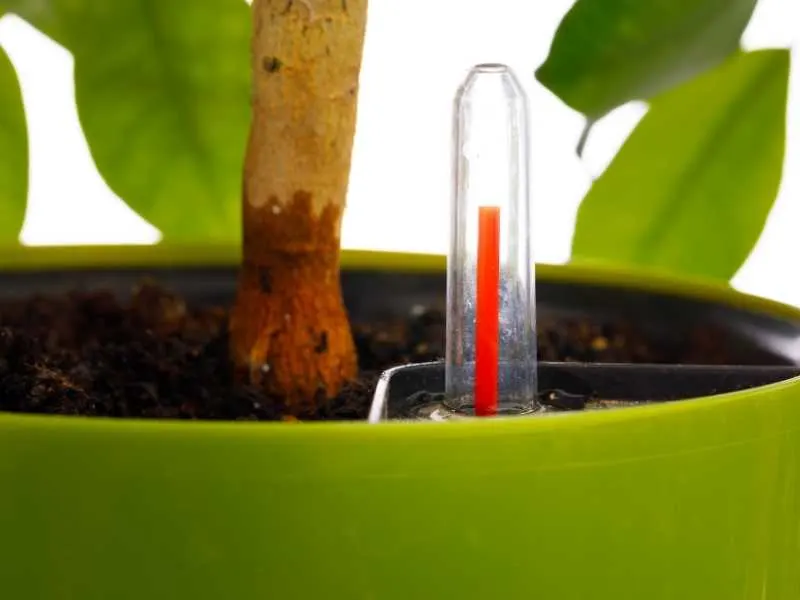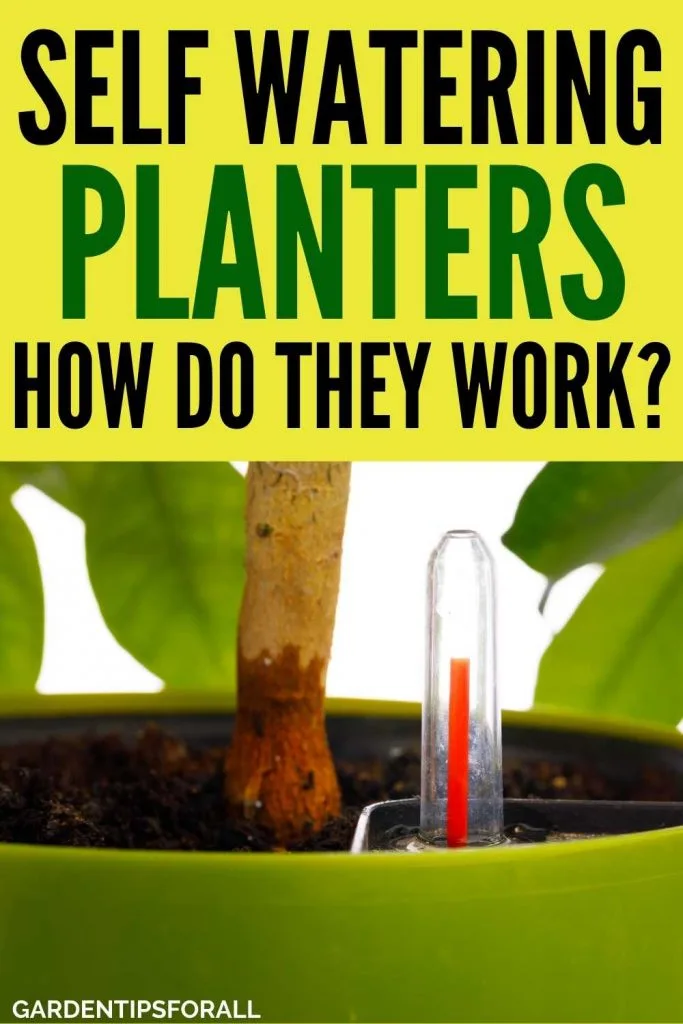Self Watering Planters – How Do They Work?
Underwatering and overwatering are two problems that affect indoor plants in containers. Hence, a lot of people are now opting for self watering pots.
But, how do self watering planters work? We are going to explain it all here. So keep reading.

Overwatering reduces the oxygen in the soil, which could damage the plant’s fine roots, causing crown and root rot.
On the other hand, underwatering your plants could lead to the plant being unable to take up nutrients from the soil, drying up and eventually dying.
You could best solve the problems of overwatering or underwatering by using a self-watering planter.
But what is a self-watering planter? Is it a system that waters itself without any of your input? Yes and no. You will find out why in a moment.
Traditional Watering of Plants at a Fixed Time of the Day May not Ideal
The traditional method of watering your plants at a fixed time may not actually be the best.
In fact, watering your plants on a fixed schedule such as every day, every other day or every week could lead underwatering or overwatering your plants.
This is because this method of watering does not actually give plants water when they need it. Watering frequency should be based on when the plants need it rather than on a routine schedule.
This is because there are several factors that determine how fast the soil loses moisture. These include temperature/weather, type of soil and type of plant.
For instance, when it is warm outside, the water in the soil dries out quickly. On the other hand, when it is cloudy outside, your soil tends to retain moisture.
So, if you are using the traditional watering method,always check the moisture conditions of your soil and only water when the soil is dry.
Sprinkling with a hose nozzle is also not ideal as the water does not go deep into the soil.
What is a Self Watering Planter?
A self-watering planter is a watering system that contains a reservoir that holds water, an inlet and an outflow. It relies on capillary action to supply water to your plant roots.
That being said, it requires your initial input of pouring water into its reservoir so that your soil mix can then wick up the moisture for the plant to absorb.
How Do Self Watering Planters Work?
A self-watering planter usually contains a reservoir of water, an inlet and a drainage system. The reservoir could be a saucer with a perforated top that allows water to sip up.
The drainage hole is drilled just above the reservoir, so that any excess water poured into the inlet can be drained out.
The soil mix comes on top of the reservoir so that water can be wicked up to the plant roots.
Water is poured into the inlet connected to the reservoir up to a particular mark. The moisture is then wicked up to the plant roots. You fill it up every time the watermark goes down to a certain level.
Capillary action, which pulls water up from the reservoir to the plant roots, can best be explained through the intermolecular forces between water and soil.
The molecular force that attracts and attaches similar molecules is called cohesion. It is what keeps water molecules together.
On the other hand, the force that connects molecules of different substances is called adhesion.
Wicking happens when the adhesive forces are more robust than the cohesive forces.
You can see capillary action at work in how a candlewick draws wax to burn at the top.
You can also see it in how a paintbrush draws paint up. At the same time, trees use capillary action to get water from the soil.
What is the Best Soil for a Self Watering Planter?
You will want to use loose soil that has excellent drainage and is well aerated. Clayey soil would therefore not be a good candidate for self-watering planters since it retains lots of the water that could cause root rot.
But what if clay soil is all you have got in your area? Do you give up? No, you could amend the clay soil by adding lots of compost and mulch.
At the same time, you could buy commercial soil mix to put in your containers. Peat, perlite, vermiculite, shale and coir are good soil mixes that could be used in your self-watering pots.
These soil amendments have good drainage, are well aerated and allow your soil to hold nutrients by increasing the cation exchange capacity (CEC).
Self-Watering Pots Pros and Cons
Pros – Benefits of Self-Watering Planters
- Your plant is evergreen. With a self-watering done right, you can rest assured that your plant will always have this lush green glossy color since it is well watered.
- Self-watering saves you time and energy – with a self-watering planter, you do not always have to be there to water your plant. You will also not be spending any money on electricity bills for sprinklers or any other irrigation system.
- A self-watering planter encourages deep root growth that makes the plant stably rooted in the container.
- With a self-watering planter, all nutrients are retained in your container.
Cons – Problems with Self-Watering Pots
- Self-watering planters are potential breeding grounds for mosquitoes if you do not have a good overflow. You could also have fungi from too much water collecting in the pot.
- If you lack a sound drainage system for your excess water, plant roots will rot.
- Self-watering planters are not suitable for all plants.
- Self-watering planters do not work quite well in the outdoors, where soil humidity would be affected by the prevailing weather conditions.
- They could cause a toxic buildup of salts and fertilizers in your planting containers. Therefore, you might have to come up with ways to fix your soil pH so that your plants can do well.
Plants that Do Well in Self Watering Containers
Plants that do well in self watering planters include
- Cherry tomatoes
- Carrots
- Japanese iris,
- Lobelia
- Cilantro
- Peace lilies
- Meadowfoam
- Hostas
Plants that Do Not Do Well in Self Watering Planters
Plants that do not do well in these self-watering planters because they require little water to grow include:
- Rosemary
- Ponytail palm
- Chinese evergreen
- Snake plants
How Do Self Watering Pots Work? Final Thoughts
Self-watering planters are one of the most modern and revolutionary systems that have been created to make farming more efficient and easier for farmers.
Self-watering planters save you time and energy that you would have spent watering your plants daily. They also ensure that the plant is always lush green since it will never lack water. With a good soil mix, you are guaranteed good soil aeration and you don’t have to worry about root rot.
The only downside about self-watering pots they are not suitable for water-retaining soil such as hard clay. Moreover, not all plants need that much water and so they would not do well with this strategy.

